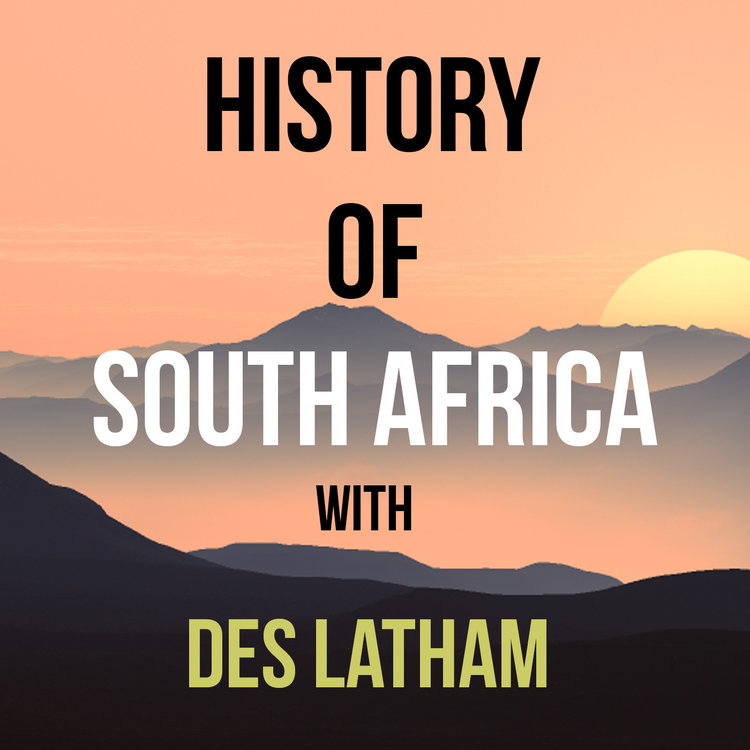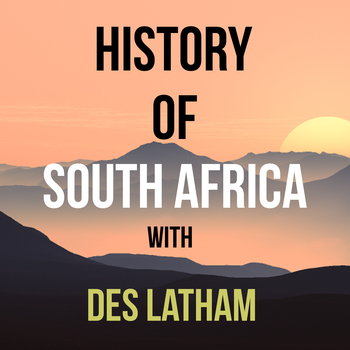
Episode 225 - Between Diamonds and Desolation: The Griqua's Journey to East Griqualand
Loading player...
This is episode 225, and the Griqua have trekked from Philippolis near modern day Kimberley, to the Maluti Mountains, a place called Nomansland. In March 1861 Faku Ka-Ngqungqushe of the amaMpondo had ceded the territory to the British, ostensibly so that Theopholis Shepstone could plant the refugees of the Zulu Civil War there, but that idea was scotched, and the Cape Governor gave the territory over to the Griqua.
By the time the great Griqua migration reached what would become Griqualand East, others had already begun trickling into this remote and mesmerising landscape — a highland plateau that straddles the transition between KwaZulu-Natal and the Eastern Cape, hemmed in by the southern Drakensberg.
At over 1,600 metres above sea level, winters bite hard here when the frost laces the sandstone ridges, and the mornings arrive cloaked in icy mist. But come spring, the veld stirs with startling vigour: the ground blushes green, and indigenous flora such as Watsonia pillansii or Pillans watsonia, Dierama reynoldsii fairy bell or hairbell, and the fiery Kniphofia caulescens — the Drakensberg red-hot poker, thrust their blooms skyward.
Aloes cling to rocky outcrops, and if you're lucky, you might glimpse the iridescent flash of a malachite sunbird, the Nectarinia famosa, feeding on nectar, or hear the distinct call of the ground woodpecker aka Geocolaptes olivaceus echoing from a sandstone cliff.
After an arduous few weeks from their farms near Philippolis, Kok’s people arrived at Ongeluk’s Nek and you know if you’ve listened to the previous podcast why it was given this name. ON the way they had passed passed through part of land claimed by Basotho king Moshoehoe, around the Hangklip area — that’s just south east of Zastron today.
Then began the arduous process of clearing a road down the mountain starting at Ongeluks Nek. It was no child’s play. Every morning, according to the annals, men set about with pick and crowbar, hammer and drills, powder and fuse to dig out a track down the mountainside.
It took weeks for the track to be hacked from the rock, and the 2000 men, women and children, their dogs and livestock, managed to slide and roll down the side heading towards a small settlement about six kilometers north of where the town of Kokstad is today.
The Griqua had finally, in their minds, arrived at their promised land. Here were rolling hills, the lower Maloti, sweet tasting river water, springs, green grass. In the ravines there were forests and the Griqua began to cut down these trees to build houses.The fledgling Griqualand state began to emerge, murderers were executed, criminals were tried and convicted and the Volksraad gathered every six months to discuss laws. This elementary form of democracy featured lengthy discussions and very little note-taking. A chief officer was elected, called a Kaptyn like the Khoekhoe leaders of old, and a privy council or executive council as it was also known was setup.
By the time the great Griqua migration reached what would become Griqualand East, others had already begun trickling into this remote and mesmerising landscape — a highland plateau that straddles the transition between KwaZulu-Natal and the Eastern Cape, hemmed in by the southern Drakensberg.
At over 1,600 metres above sea level, winters bite hard here when the frost laces the sandstone ridges, and the mornings arrive cloaked in icy mist. But come spring, the veld stirs with startling vigour: the ground blushes green, and indigenous flora such as Watsonia pillansii or Pillans watsonia, Dierama reynoldsii fairy bell or hairbell, and the fiery Kniphofia caulescens — the Drakensberg red-hot poker, thrust their blooms skyward.
Aloes cling to rocky outcrops, and if you're lucky, you might glimpse the iridescent flash of a malachite sunbird, the Nectarinia famosa, feeding on nectar, or hear the distinct call of the ground woodpecker aka Geocolaptes olivaceus echoing from a sandstone cliff.
After an arduous few weeks from their farms near Philippolis, Kok’s people arrived at Ongeluk’s Nek and you know if you’ve listened to the previous podcast why it was given this name. ON the way they had passed passed through part of land claimed by Basotho king Moshoehoe, around the Hangklip area — that’s just south east of Zastron today.
Then began the arduous process of clearing a road down the mountain starting at Ongeluks Nek. It was no child’s play. Every morning, according to the annals, men set about with pick and crowbar, hammer and drills, powder and fuse to dig out a track down the mountainside.
It took weeks for the track to be hacked from the rock, and the 2000 men, women and children, their dogs and livestock, managed to slide and roll down the side heading towards a small settlement about six kilometers north of where the town of Kokstad is today.
The Griqua had finally, in their minds, arrived at their promised land. Here were rolling hills, the lower Maloti, sweet tasting river water, springs, green grass. In the ravines there were forests and the Griqua began to cut down these trees to build houses.The fledgling Griqualand state began to emerge, murderers were executed, criminals were tried and convicted and the Volksraad gathered every six months to discuss laws. This elementary form of democracy featured lengthy discussions and very little note-taking. A chief officer was elected, called a Kaptyn like the Khoekhoe leaders of old, and a privy council or executive council as it was also known was setup.

